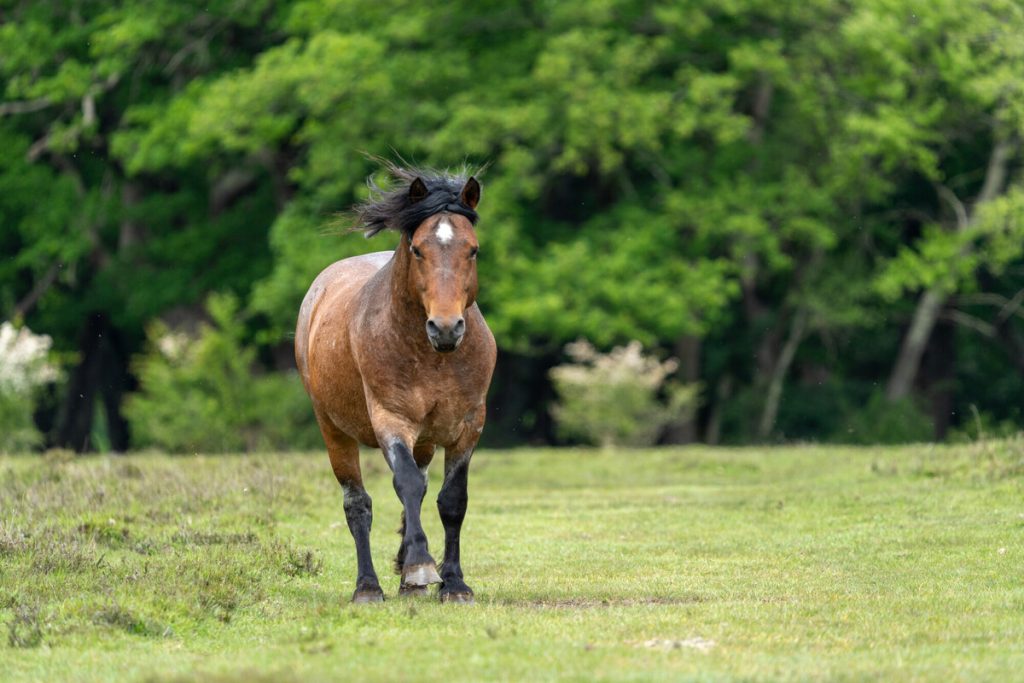New Forest stallions form an integral part of the area’s long and rich history.
They are released out onto the Forest – for a certain period determined by the Verderers each year – to breed with free-roaming mares and improve the quality of the foals produced.
This year a total of 21 stallions were turned out over a six-week period across various locations in the Forest.
‘The turning out of the stallions is such an important event in the commoners’ calendar,’ said Tina Woodley, the Verderers of the New Forest Grazing Scheme administrator.
‘Stallions are crucial to maintain native bloodlines. The ponies are the architects of the New Forest and they have been here for hundreds of years. Without their input, it would look a very different place.
‘They are bred to be hardy and resilient to survive harsh winters, but also dry summers.
‘The time the stallions go out marks the [start of the] production of next year’s foals, which is what all the registered New Forest mares are out for.
‘It is hoped they will produce foals that are saleable and of good pedigree and of good stance, and for replacement filly foals which every commoner would hope to get to increase their stock and keep bloodlines going.’

Pictured: New Forest stallion Mallards Wood Law and Order
The stallions are held on a private holding for the rest of the year under the Verderers of the New Forest Higher Level Stewardship (HLS) scheme, which provides annual funding for their grazing.
The scheme is a partnership between the Verderers of the New Forest, Forestry England and the New Forest National Park Authority, as well as support from Natural England and the New Forest Commoners’ Defence Association.
The funding encourages commoners – those who own and look after the livestock in the Forest – to own stallions and ensures they have land to graze on during the long period when they are not permitted to be on the Forest.
‘The HLS scheme is now in its 14th year to help keep the New Forest in good condition and improve areas that are diminishing,’ added Tina.
‘The stallion scheme feeds off other projects like the rare bloodlines scheme, where we try and increase the registered gene pool of New Forest ponies.
‘Then there is the futurity scheme, where potential stallions are earmarked and then they come forward as two year olds as potential stallions for the Verderers’ stallion scheme, which they can remain in until they are 18 years of age.’
Seeing the stallions turned out onto the Forest is always a proud moment for the commoning community.
There are around 5,000 ponies which roam the Forest and whose grazing habits help shape the landscape which thousands enjoy every day.
Agister Robert Maton added: ‘Our stallions are one of the most important things of our New Forest breed and keeping the bloodlines as diverse as we can is very important.
‘We did narrow the bloodlines back in 2002 and since then we have been trying to widen them as much as we can to make sure there is no inter breeding in our herd of New Forest ponies.
‘The ponies have been on the Forest for hundreds of years and they are the best and cheapest things you can have to keep the Forest down and as we like it.’